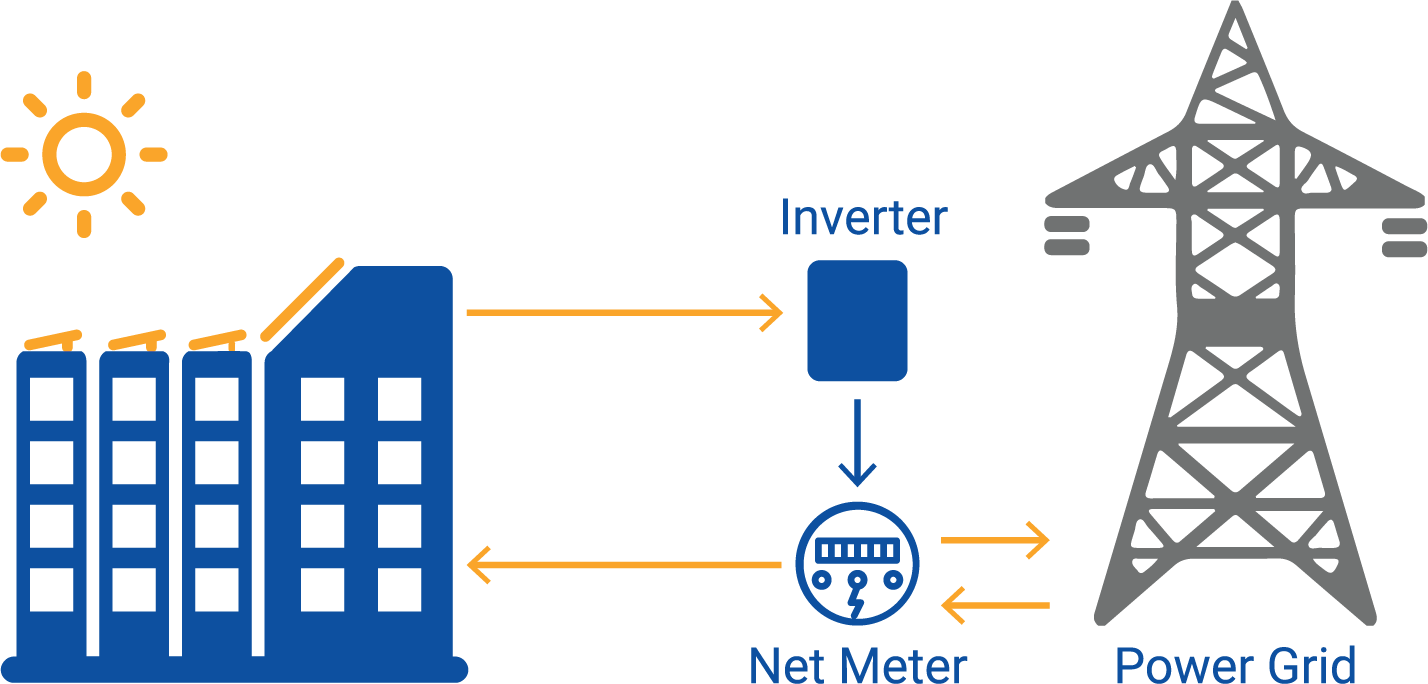How It Works
Each commercial system and installation is unique, with factors such as available roof, canopy, or land space, electricity needs, and financial objectives influencing the system’s size. Due to the diverse designs and installations, various components may be employed. For instance, the equipment used for a pitched roof differs from that used for a ballasted installation on a flat roof. Carport and ground installations necessitate additional structures and cabling to connect to the meter.
Essential components for a commercial solar system encompass panels, an inverter power station, individual systems for cable management, mechanical mounting, and energy monitoring. The system’s cost is contingent on the manufacturer, type, and quality of these components. At Arizona Solar Wave, we prioritize your goals and collaborate with you to suggest optimal combinations.
We assist in determining the most suitable location for panels, whether on your roof, over parking lots, or on vacant land.



Explanation of Net Energy Metering/Demand Charges
- Bucket 1—A fixed monthly fee, the amount of which depends on the rate tariff you are on. This fee remains even after you go solar.
- Bucket 2—Time of use charges. Commercial customers are charged based on the time of year and time of day that a given kWh is consumed. Rates are higher in summer vs. winter and higher in the afternoons/evenings than in the middle of the night.
- Bucket 3—Demand charges. The utility actually tracks usage in 15-minute increments, and the demand charge is based on the highest peak in a given month or quarter. The demand charge is often half of a commercial customer’s bill and sometimes even more!

When a business adds solar, it enters into a “Net Energy Meter” agreement with the utility company. This agreement states that the utility will credit the customer at the same rate it would charge the customer for a given kWh. For the sake of explanation, let’s assume that a business is open 5 days a week, Monday through Friday. On Saturday and Sunday, very little electricity is being used, but the solar system is creating power; that power is going back out into the grid, and the customer is being credited for the power it created. On Monday morning, staff shows up to work and turns everything on. The credit that was created over the weekend is used up before new electricity charges are billed. Hour by hour, day by day, and month by month, the balance between kWh used and created remains constant.




